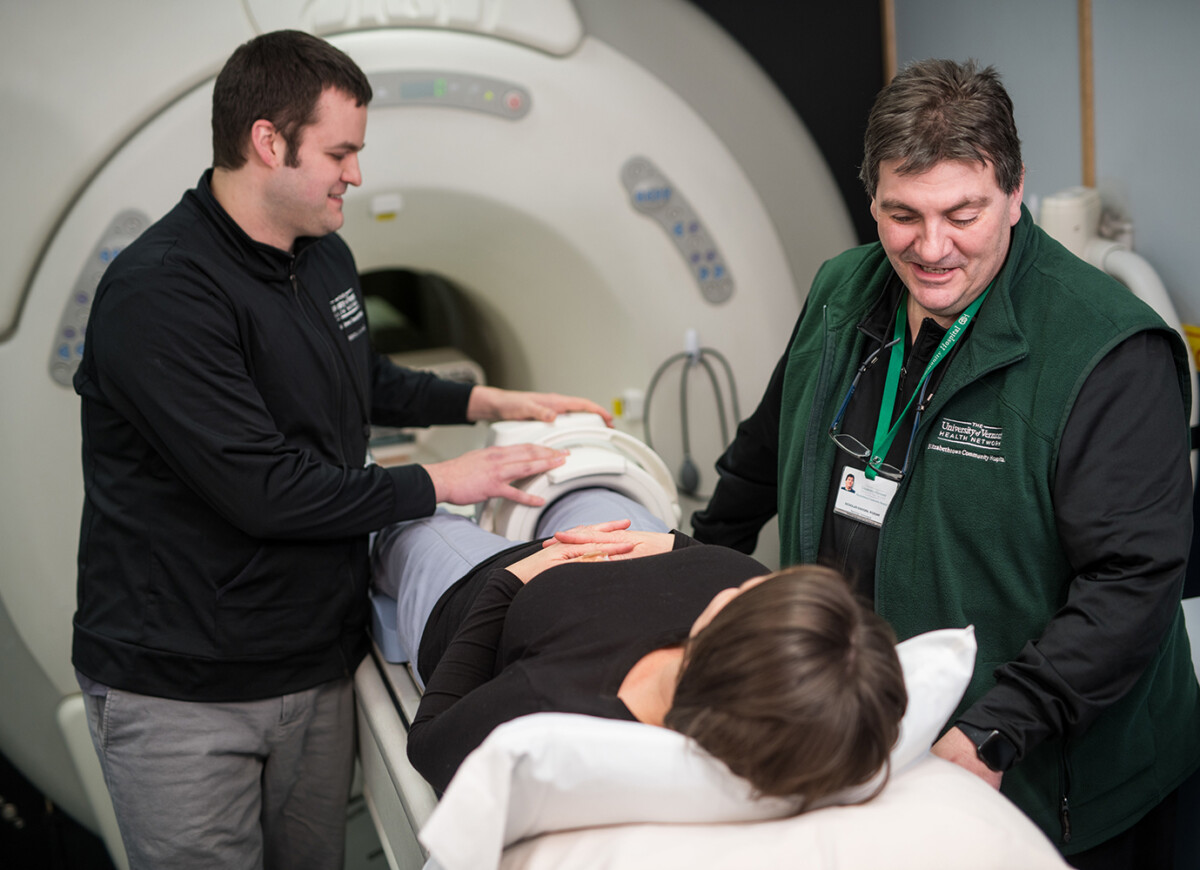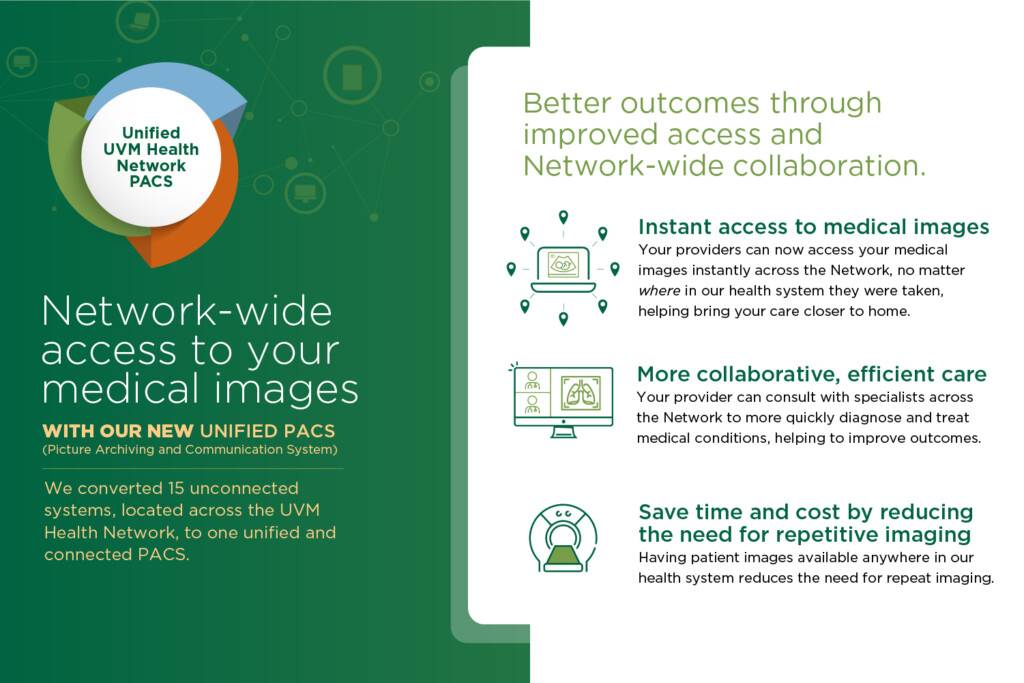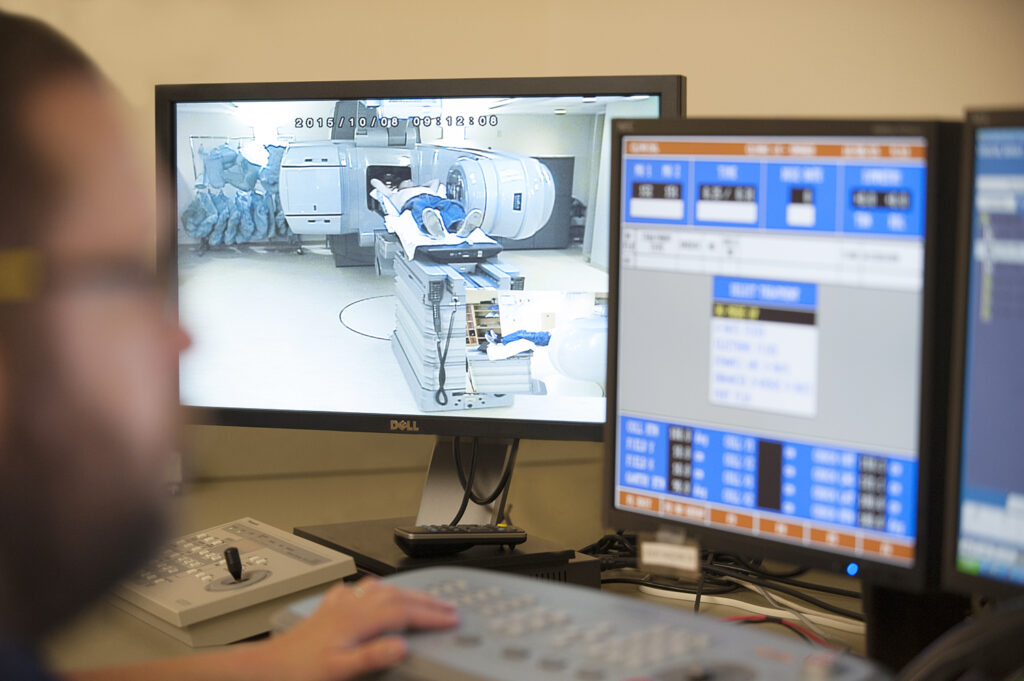Radiology at the Speed of a Click

When a patient needs to be transported from one hospital at The University of Vermont Health Network to another, their imaging records no longer have to make the same trip. Thanks to the health system’s new unified, integrated Picture Archiving and Communication System (PACS), an MRI or CT scan taken in Plattsburgh, New York is available instantaneously in Burlington, Vermont. No courier or helicopter needed. No paper folder – not even a manual digital transfer.
The imaging sharing process that the new PACS replaced – one that was driven by requests within and between partner organizations – gives the physicians on the other end of the transfer valuable time to begin preparing to receive the patient and plan their treatment. Depending on the injury or illness, that additional time can have a major effect on health outcomes.
But even in less dramatic cases, like when someone who has been a patient at a UVM Health Network hospital in New York reinjures their knee skiing in Vermont or a patient in central Vermont is referred to a specialist at a different hospital within the health system, the new PACS has its benefits. It cuts down on the need for duplicative imaging, which reduces costs for both the patients and the health system. Eliminating repeat imaging also makes it easier for patients to access the care they need by preventing scheduling logjams.

Some of the new system’s virtues are a little more subtle. The administrative overhead of internal imaging requests and transfers was extreme and inefficient. Now staff can focus more on providing services than managing paperwork and logistics. Patients, too, are freed from hassle. They no longer need to worry about keeping track of their own imaging records.
Making the switch to a unified Network PACS wasn’t as simple as building an adequate archive and communication solution from the ground up. It required integrating and replacing 15 separate systems spread out at different partner organizations. “We wanted to preserve the best parts of each system and make sure that users could pivot easily from the system they were used to, to the unified Network PACS,” explains Brian T. Douglas, Network Manager, Clinical Informatics, Quality Assurance and Image Management.
Rolling out new technology isn’t just a matter of making sure it works technically; the technology also has to be tailored to the needs and experience of its users.
Brian T. Douglas
While moving from several systems to one was a heavy lift upfront, it’s made the ongoing technical upkeep simpler and more streamlined. “It’s a lot easier to maintain a single, state-of-the-art PACS than it was to service 12 different ones, some of which were in danger of becoming outdated or no longer supported,” says Robin Mercier, the PACS Information Technology Program Manager.

Additional developments for the new PACS are on the horizon. The system’s “smart worklist,” which helps clinical staff prioritize imaging work and coordinate their efforts at each partner organization, will eventually be expanded so that Radiologists across the health system can work together to tackle the most pressing imaging needs first no matter where they originate. “If something comes up that I need to look at right away, one of my colleagues in Burlington who has some time can pick up the next thing on my list and vice versa,” says Jay Kikut, MD, Division Chief, Radiology.
It’s already been a huge help locally, and being able to do it someday on a larger scale will only improve our efficiency and the quality of care we provide.
Jay Kikut, MD
